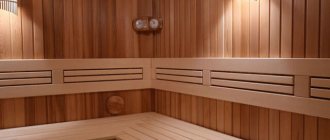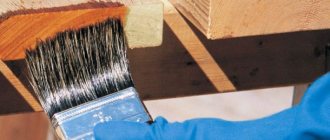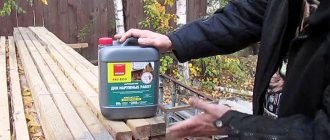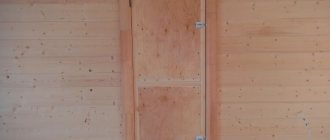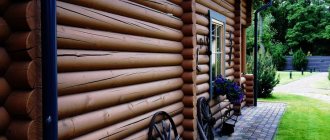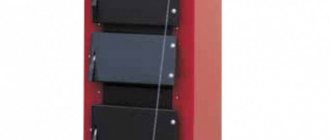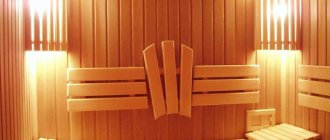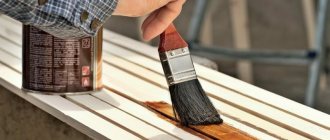How to remove soot: types of surfaces, home methods, use of professional products, effective ways to eliminate the problem
A serious fire is a terrible event. Only good repairs will help clean the premises after it. What to do if there is a minor fire? How to remove soot and soot? Of course, cleaning company employees can handle this best, but if you decide to do the cleaning yourself, you should pay attention to our useful tips! Today we will talk about how to get rid of traces of fire, how to remove soot from heating equipment in a bathhouse.
Basic recommendations
Soot, also called soot or soot, is small particles of materials that have not burned completely. In order to wash it, you will have to use fairly aggressive methods. The main feature is that soot has one very insidious property: if you add even a little water to it, it will turn from a dry substance into a fatty sticky mass. That is why you should not try to wash off the soot with water, or wipe it off with wet rags. This way you will drive it even deeper into microcracks in the ceiling, floor or walls.
When talking about how to clean soot, you should pay attention to the fact that you need to exclude the following products:
- water;
- liquid or laundry soap;
- sponges and any hard brushes.
All of the above products can be used only after carbon deposits have been removed from wood or other surfaces. In order to clean soot from surfaces, it is necessary to use personal protective equipment. You will need:
- glasses;
- robe;
- headwear, such as a cap or scarf;
- respirator (you can replace it with a regular gauze bandage);
- latex gloves.
What you need to know about soot
The properties of soot directly depend on what materials were burned.
For example, wood releases more resinous soot; when plastic burns, it is caustic and sticky. In any case, carbon deposits contain a certain amount of fat, so you can’t just wipe it off the surface. If you try to wipe off the soot with a regular napkin dipped in water, the situation will only get worse. To remove soot, you must use fat-soluble products.
https://www.youtube.com/watch?v=WT3FqN4DLa0
Soot particles are very small. They easily penetrate into porous materials, from where they are difficult to remove.
Among other things, fumes are toxic. It is especially dangerous to stay indoors for a long time after a fire. When cleaning, it is recommended to wear a respiratory mask and protect your hands with gloves. When cleaning the ceiling, wear safety glasses to prevent the suspension from getting into your eyes.
Note! Laundry soap and hot water will help remove soot from your skin.
How to clean soot after a fire?
The first thing to do is to sweep the soot with a dry, stiff brush onto the oilcloth or newspaper. After this, you should use a sponge soaked in a special chemical composition. You can buy it at a hardware store. Use this sponge to thoroughly clean the surface. The next stage is wet cleaning with detergents that can dissolve grease. Perfect for washing dishes or toilet bowls. Please note: under no circumstances should you rub the product that you apply to the contaminated surface! Rinse it off with sharp movements so as not to smear the burnt residue.
Cleanliness in the steam room
The steam room in the bathhouse requires special attention. After all, when using brooms, particles of plant pigment from stems and/or leaves are absorbed into wooden shelves and walls along with moisture. Therefore, the question inevitably arises of how to clean the steam room in a bathhouse to give it a fresh and pleasant look.
The problem of how to clean linden lining in a bathhouse, especially in the steam room, can be solved in different ways. If the wood darkens slightly, you can use special liquid detergents and/or paraffin oil.
The cleaning liquid is applied to the darkened surfaces manually using a piece of foam rubber or a regular sponge. The pre-detergent must be diluted with water. How to do this is detailed in the instructions.
Paraffin oil is gradually applied to pre-dried surfaces using a dry sponge. In this way, you can not only clean the lining in the steam room, but also give the wood water-repellent properties. This will protect the wood trim and various items from severe and rapid contamination.
Washing the ceiling
It's a little more difficult to work with soot on the ceiling. The fact is that ceiling coatings can be different, and therefore general cleaning techniques may not be suitable for a particular surface. The easiest way to remove soot is on a glass ceiling. To do this, just apply a liquid suitable for cleaning windows, gently wipe with crumpled newspaper, and then use a soft, dry cloth. There will be no problems with laminate either: just moisten a sponge in purified alcohol or gasoline and remove the soot. Carbon deposits can be removed from ceramic tiles with high-quality dishwashing detergents or those designed for cleaning ceramic tiles.
It is a little more difficult to work with a wooden ceiling. How to remove soot from such a coating? A proven old-fashioned method will do: rub the ceiling with river sand or red brick. The most difficult coating to clean will be water-based paint or whitewash. Small stains can be removed with salt, but if the entire ceiling is smoked, only new paint will save it. But the soot still needs to be removed first, because the paint won’t adhere to it. How to do it? Clean the surface thoroughly with a dry brush and then wipe with rubbing alcohol. If the fire was large, you should invite professionals: cleaning service specialists have professional cleaning products that are extremely difficult to find in a regular store.
Cleaning heating equipment
Soot can accumulate on the walls after a fire. It often forms around the fireplace. Before you start cleaning the walls from soot, the excess must be brushed off with a broom, brush or vacuum cleaner.
Next, the following substances will help you clean the walls from soot yourself:
- Special sponges soaked in soot-soluble liquid (sold in hardware stores).
- Alcohol. Napkins or gauze are soaked in it and carbon deposits are removed from the walls step by step.
- Petrol. This liquid also dissolves soot perfectly. Gauze is moistened in it and the surface of the walls is wiped.
The listed products can be used to clean any other surfaces (including the ceiling) that cannot be washed well with ordinary soap. In order not to stain the floor when cleaning the walls or ceiling, it is covered with plastic film or old newspapers.
Note! Heavy deposits of soot can rarely be washed off the walls without leaving a trace. Even if the blackness disappears, erased traces remain on the whitewash and wallpaper. Most likely, you will have to refresh the walls and cover them with new finishing material.
We suggest you read: Bathhouse for coughs, runny nose and sore throat: you can or cannot take a steam bath
Soot also settles on the glass. Any special glass cleaner will easily remove carbon deposits. Before using it, it is necessary to remove excess soot with a cloth, moistening it in a soap solution.
If there is no glass cleaner, then drop a little ammonia or vinegar into the water and finish washing the windows. To give the glass a crystal shine, use special microfiber cloths or plain newsprint.
Wood is a highly porous material. Soot particles can penetrate so deeply into its microholes that simple surface washing will not help. First, you should try to wash off the carbon deposits from the wood using any of the above methods (soap solution, alcohol, gasoline, ammonia solution). If the blackness does not go away, there is only one option left - sanding the wood.
For small surfaces, a piece of sandpaper will suffice. Larger areas are treated with a grinding machine.
When trying to put out a fire or even when cleaning a room from soot, you can get your clothes dirty. But there is no need to panic, soot is easily removed from fabrics. You don't need any special tools. Simply soak the item in soap or powder and then wash it in the washing machine at the maximum temperature allowed for the fabric.
For white items, you will most likely need to use bleach.
Note! Household carpet cleaners will help remove soot from the carpet. A washing vacuum cleaner will make the task easier.
Often, soot particles settle on the sauna stove and on the objects that surround it. What to do in this case? First, decide what material the stove or boiler is made of. After all, the methods for cleaning soot from different surfaces differ significantly! We suggest we talk about how to remove soot from bricks and metal structures.
Mechanical cleaning
Can soot be safely removed from ceilings, floors and walls? Of course yes! To do this, you will need a scraper with a sharp base or a regular spatula. Using these items you can dry clean any surface from dirt. True, this will require a lot of free time and physical strength. By the way, the easiest way to prevent serious contamination: to do this, after completing each fire of the sauna stove, you need to take a soft brush, which is intended for wood, and clean the floor and walls of the sauna. Another mechanical method is to use a grinding machine, the flap-type wheel of which has a diameter of up to 12 cm and a grain size of 35 units. Of course, as a result of the work, a large amount of dust will appear, but it can be quickly and easily removed using a clean rag and soap solution.
Why does the chimney become dirty?
How to clean a chimney in a bathhouse depends on the nature of the contamination. With use, types of clogging may occur such as:
- soot and soot, which accumulates very quickly when burning household waste;
- condensation that forms due to irregular use of the bathhouse;
- foreign objects accidentally falling into the chimney.
All of these types of contaminants ultimately impede the free circulation of air and the escape of smoke through the chimney. This may cause carbon monoxide poisoning. Condensate is a weakly concentrated acid solution. Under its influence, the chimney masonry begins to collapse from resinous deposits.
If you use a sauna regularly, you need to make a schedule and determine in advance when and how to clean the pipe in the sauna. Carrying out such work regularly will preserve the chimney and stove and allow you to use the sauna without any problems.
The chimney and pipe in the bathhouse are cleaned chemically and/or mechanically. In a special store you can purchase liquids and/or powders for cleaning the chimney. Detailed instructions are printed on the packaging. After reading it, it will become clear how to clean a pipe in a bathhouse.
A good answer to the question of how to clean soot in a bathhouse that has accumulated in a chimney would be a “log chimney sweep.” It is impregnated with special chemicals. During combustion in the furnace, smoke of a special composition is released. As a result, the soot becomes soft and pliable. After 2 or 3 days it can be removed with brushes without much difficulty.
For mechanical cleaning of the chimney you will need the following tools and devices:
- rope and/or rope;
- weight (ball);
- brush-ruff (preferably on a thin metal cable).
First you need to check the safety of the structure. Then you need to remove any objects that accidentally got into them from the pipe and chimney. For this purpose, a brush-ruff is used, selected according to the size and shape of the pipe.
A special modern brush will make cleaning work easier. It comes with a handle consisting of several links. This allows you to adjust the length of the brush as needed. During cleaning work, any brush must be moved inside the pipe, gradually moving it lower and lower.
Such work must be performed in a special set of clothing, which must include:
- overalls or suit;
- respirator;
- gloves;
- protective glasses.
If the chimney is not very dirty, you can call a specialist. He will clean it using a special high-power vacuum cleaner. This will remove soot from the chimney through the firebox opening. The use of special means will help resolve the issue of how to clean the chimney of contaminants and how to clean the pipe of soot in a bathhouse.
Dry cleaning
How to wash soot off walls, floors and ceilings in a bathhouse? Liquid chemical compositions, which can be purchased at a hardware store, are ideal. They should be applied to the surface, following the rules specified in the instructions, and after a certain period of time, washed off along with the dirt. Most highly concentrated chemical preparations contain alkaline components that quickly remove soot without damaging the structure of the tree. But you should avoid abrasive-based powders and cleaners, as they are completely unsuitable for cleaning wooden surfaces. Replace them with neutral gels with a degreasing effect.
Are you wondering how to remove soot from a wall or ceiling? Use chemical sponges that are soaked in deep penetration substances. They will easily remove the smallest particles of soot that have penetrated the wood structure. The principle of operation is quite simple: you need to clean the surface with a quick movement from top to bottom. Please note: these sponges become clogged very quickly and become unsuitable for use, and therefore in order to complete all the work efficiently, you need to take care of a sufficient amount of this material. The final stage is washing the surfaces with clean water. After this, you can wipe the ceiling, walls or floor with a soft cloth. You can use any degreasing product. Helpful tip: in order to clean the floor and walls as quickly as possible, you can use a mop with a telescopic handle.
We remove soot from smooth, washable surfaces
Plastic laminated coverings, linoleum, and varnished interior items do not contain pores, so dirt disappears from them quickly. To quickly remove soot from such coatings, any detergent is sufficient: laundry soap, washing powder, liquid soap, even dish gel will do.
A soap solution is diluted in hot water. How to remove soot depends on the amount of dirt. It will be convenient to wash a cabinet or other small piece of furniture with a soft cloth or gauze. For small items it is better to use a sponge. And for the floors you need rags.
A napkin/sponge/rag is moistened in a soapy solution and the smoked areas are washed. If there is a lot of carbon deposits and the water quickly turns black, change it. And so on until all the soot is washed away. Finally, the surface is washed with clean water.
We suggest you read: How to properly install floor joists
Soot deposits on walls and ceilings are removed in a few steps. Be sure to cover the floor with cellophane, and it is recommended to seal the joints with tape so that the removed soot does not soak into the floor. Plaque can be removed with a vacuum cleaner or a dry broom using jerky movements, and then treat the walls and ceiling with a specially impregnated sponge.
The chemical composition is left on the surface for a specified period of time in accordance with the manufacturer’s recommendations, and then washed off with warm water along with any remaining soot and soot. If necessary, repeat the procedure. After completing the treatment, allow the surface to dry thoroughly.
Metal
Cleaning metal structures is a fairly simple procedure: you will need a clean, damp sponge and soap solution. If the soot layer is too dense, you can use fine river sand. True, it must be borne in mind that abrasive materials perfectly clean metal, but at the same time they contribute to the appearance of corrosion and can destroy it. For this reason, experts recommend using abrasives only if no other cleaning method is suitable. After this, it is necessary to paint all damaged surfaces. Neutral chemical compounds and removers are much better suited, because they will not only clean the metal surface, but also will not damage it. Among the folk methods, one can note the purification of metal using water in which citric acid is diluted, or Coca-Cola.
Proper maintenance of the bath
To prevent severe contamination and the appearance of fungus, mold, and woodworms, the bathhouse must be kept clean at all times. It is advisable to periodically treat internal surfaces with antiseptics to protect against microorganisms.
To prevent rotting of wooden coverings, it is necessary to apply special compounds to walls, shelves, etc. All wooden surfaces should be inspected periodically. Elements affected by rotting must be removed partially or completely.
After each use, the bathhouse must be ventilated to dry the interior. Immediately after taking bath procedures, you need to do cleaning. This will remove any stains from the interior surfaces before they are absorbed into the wood.
They are removed with a special brush, sponge or rag. After that, shelves and other surfaces should be washed with warm water. This will help remove residual sweat, detergents, etc.
The remaining water on the floor must be carefully adjusted to the drain holes. When cleaning, special attention should be paid to the space under the shelves.
To prevent cockroaches or mice from getting in, all leftover food from the rest room must be removed immediately and the trash taken out. Bath accessories should be dried and placed in storage areas. The final stage is wet cleaning of all sections of the bathhouse. It is also necessary to carry out general cleaning periodically. Proper maintenance of the bathhouse will preserve the attractive appearance and cleanliness of the interior space, as well as the integrity of all coatings.
Prevention
To prevent the lining from turning black and deforming, it is enough to follow a few simple recommendations:
- if the façade of a building is covered with wooden clapboard, then it must be mounted at a short distance from the surface to be refinished,
- after covering a wall, floor or ceiling with special boards, the building material must be processed (primed, varnished, painted, etc.),
- in a room lined with clapboard, you need to equip a good ventilation system,
- if it is not possible to install fans, ventilate the room regularly,
- Once every six months, the cladding board must be impregnated with a special protective compound, which minimizes the risk of mold and mildew and protects the building material from precipitation.
And lastly: the higher quality materials are used for interior or exterior decoration, the less time and effort will be needed in the future to return the cladding board to its original appearance.
